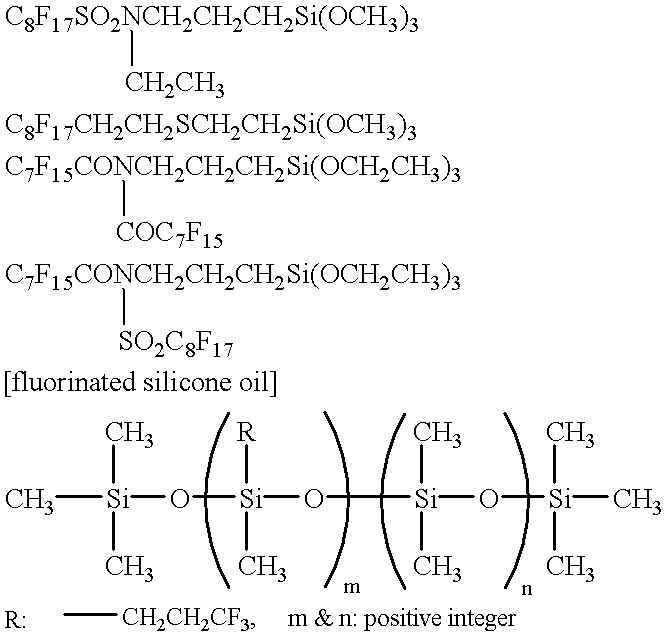Electrophotographic photosensitive member, and process cartridge and electrophotographic apparatus including the photosensitive member
a photosensitive member and electrophotography technology, applied in the direction of electrographic process apparatus, optics, instruments, etc., can solve the problems of inability to keep the resistivity of the protective layer in the above-mentioned range, inability to achieve the effect of reducing the resistance of the protective layer
- Summary
- Abstract
- Description
- Claims
- Application Information
AI Technical Summary
Benefits of technology
Problems solved by technology
Method used
Image
Examples
example 2
[0110] Example 1 was repeated except that the protective layer thickness was increased to 7 .mu.m.
examples 3 and 4
[0111] Photosensitive members were prepared and evaluated in the same manner as in Examples 1 and 2, respectively, except for using a protective layer coating liquid (i.e., a coating liquid providing a protective layer) obtained by reducing the amount of the antimony-doped tin oxide fine particles surface-treated with 7% of the fluorine-coating silane coupling agent of the formula (4) from 50 parts to 20 parts, and further adding 30 parts of antimony-doped tin oxide fine particles surface-treated with 20% of a siloxane compound of formula (1) below (methylhydrogensilocone oil) ("KF-99", available from Shin-Etsu silicone K.K.). 8
[0112] The surface-treated tin oxide particles exhibited Rv=5.times.10.sup.2 ohm.cm.
example 5
[0113] A photosensitive member was prepared and evaluated in the same manner as in Example 1 except for using a protective layer coating liquid obtained by using 50 parts of surface-untreated antimony-doped tin oxide fine particles ("T-1", available from Mitsubishi Material K.K., Rv=1.times.10 .sup.0 ohm.cm) instead of the antimony-doped tin oxide fine particles surface-treated with the fluorine-containing silane coupling agent of the formula (4), and further adding 5 parts of the fluorine-containing silane coupling agent of the formula (4) ("LS-1090", available from Shin-Etsu Silicon K.K.).
PUM
| Property | Measurement | Unit |
|---|---|---|
| Temperature | aaaaa | aaaaa |
| Length | aaaaa | aaaaa |
| Length | aaaaa | aaaaa |
Abstract
Description
Claims
Application Information
 Login to View More
Login to View More - R&D
- Intellectual Property
- Life Sciences
- Materials
- Tech Scout
- Unparalleled Data Quality
- Higher Quality Content
- 60% Fewer Hallucinations
Browse by: Latest US Patents, China's latest patents, Technical Efficacy Thesaurus, Application Domain, Technology Topic, Popular Technical Reports.
© 2025 PatSnap. All rights reserved.Legal|Privacy policy|Modern Slavery Act Transparency Statement|Sitemap|About US| Contact US: help@patsnap.com



